The Desperate Trek: Colombia
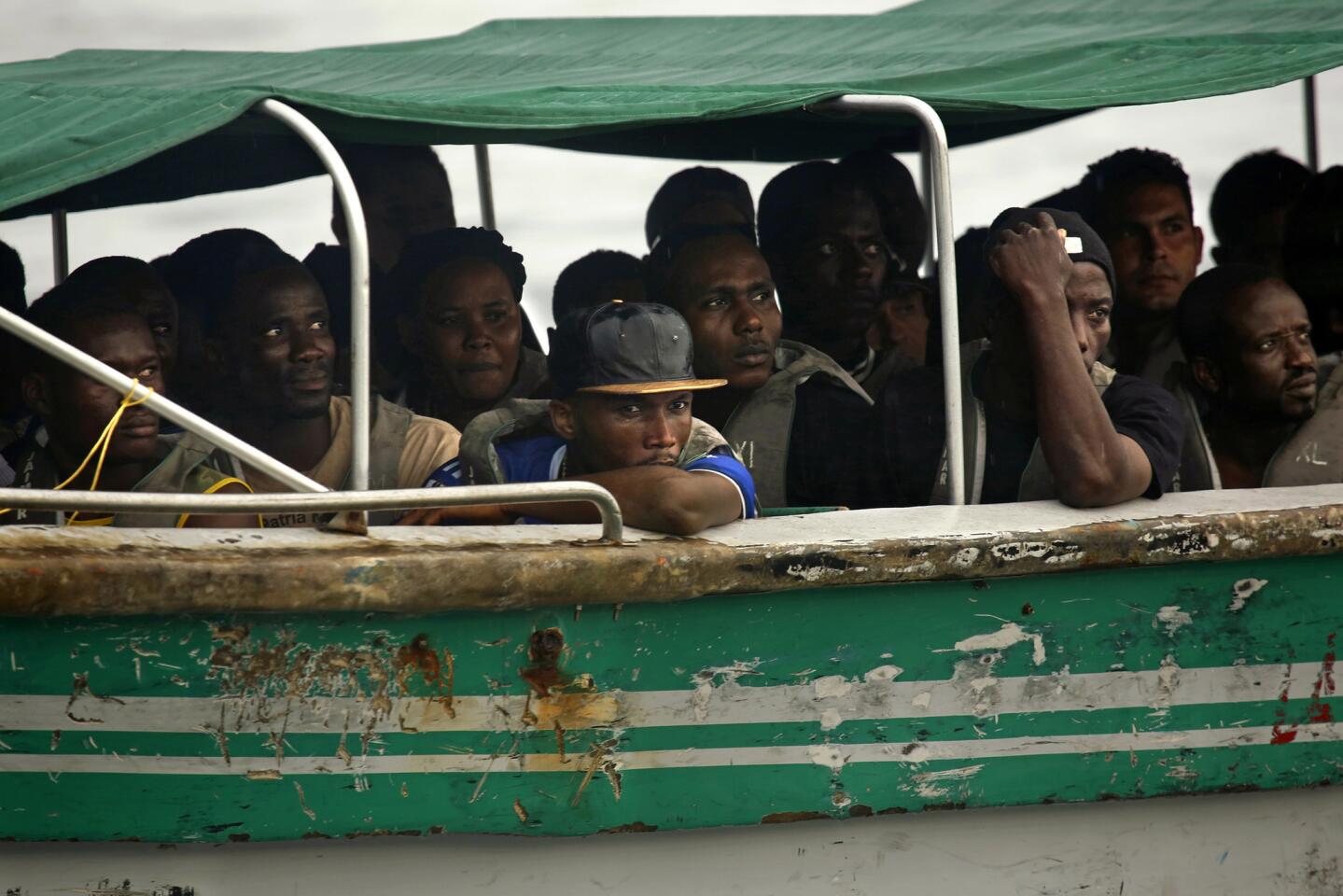
Every day hundreds of migrants from Cuba, Haiti and parts of Asia and Africa are attempting to cross the border from Colombia to Panama in the hopes of making it to the U.S.
(Carolyn Cole / Los Angeles Times)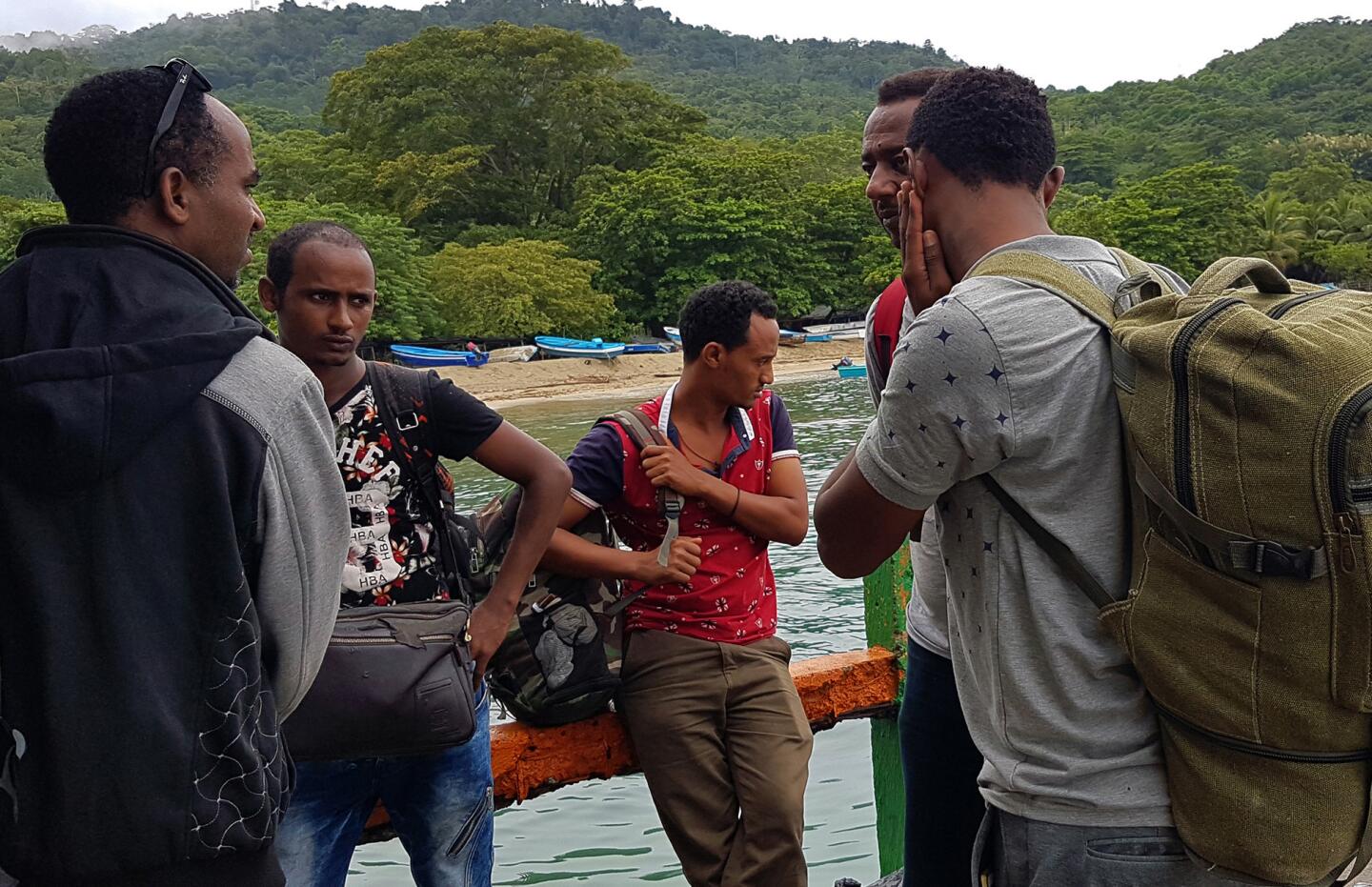
Eritrean migrant Fishale Haile, 26, second from left, and other migrants who will make the trek through the jungle to Panama.
(Kate Linthicum / Los Angeles Times)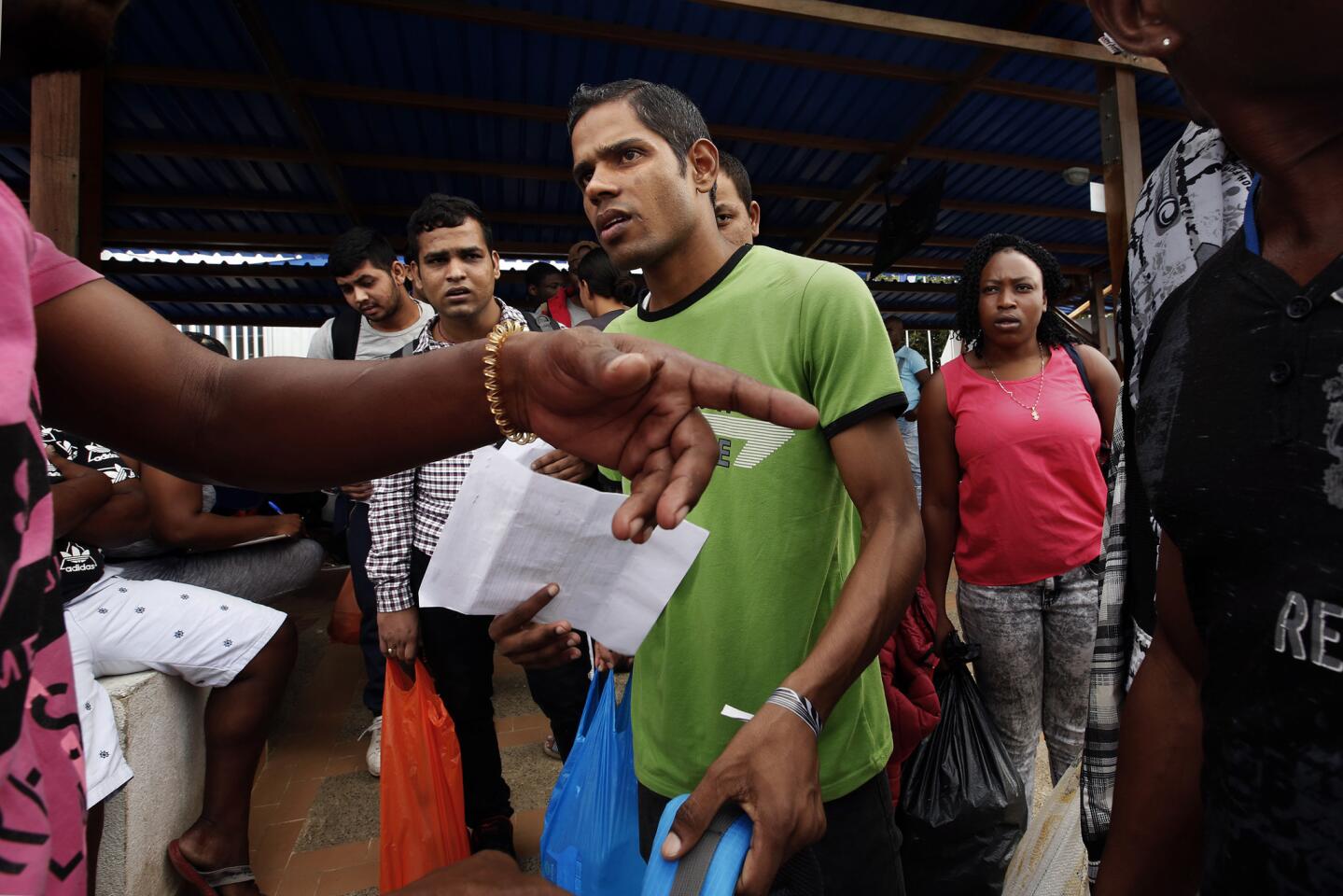
Men from Nepal and India board boats in Turbo, Colombia, headed north. Every day hundreds of migrants from Cuba, Haiti, Nepal, and Africa are attempting to cross the border from Colombia to Panama in the hopes of making it the United States (Carolyn Cole / Los Angeles Times)
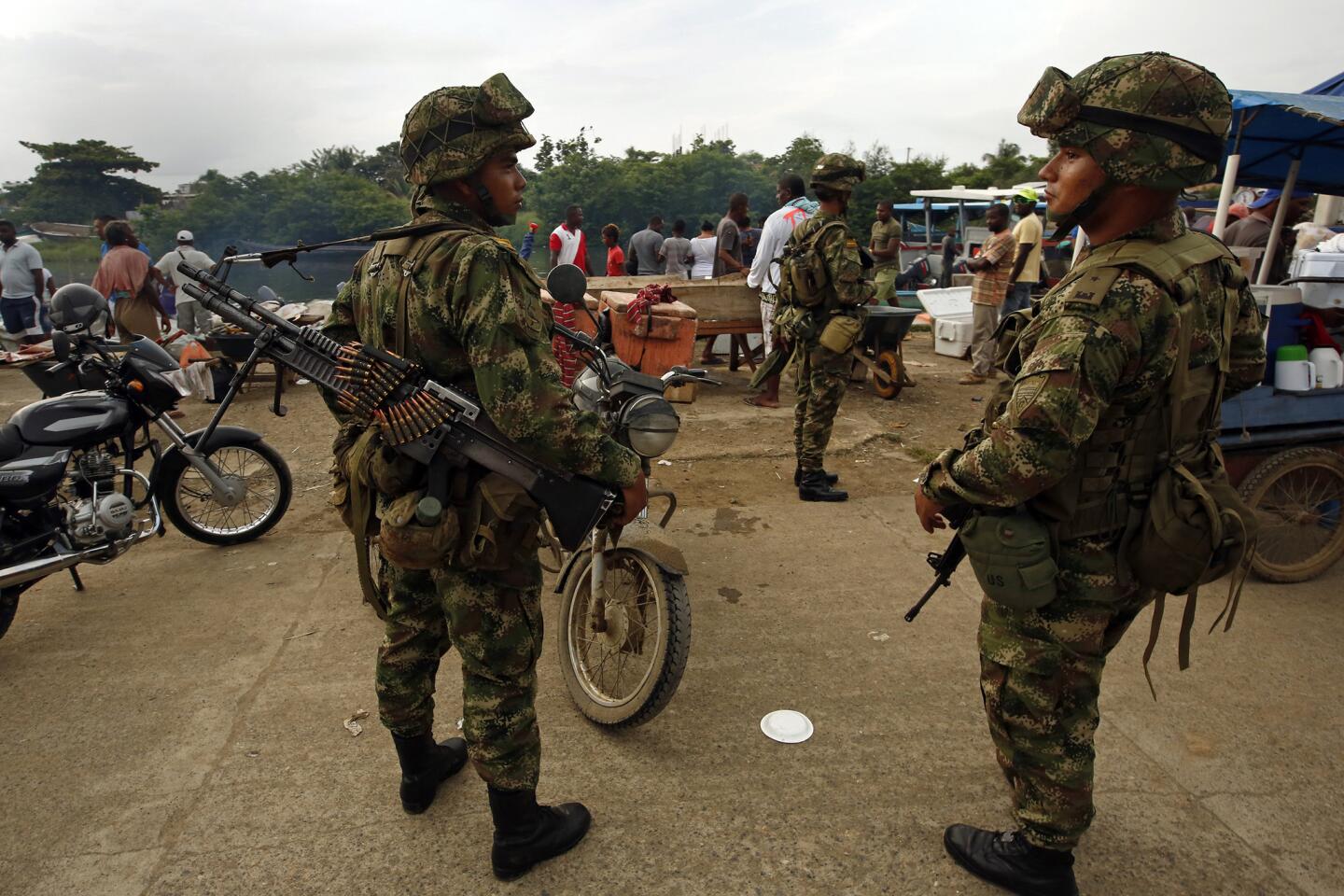
Colombian soldiers patrol the port of Turbo, checking for human traffickers and drug smugglers.
(Carolyn Cole / Los Angeles Times)Advertisement
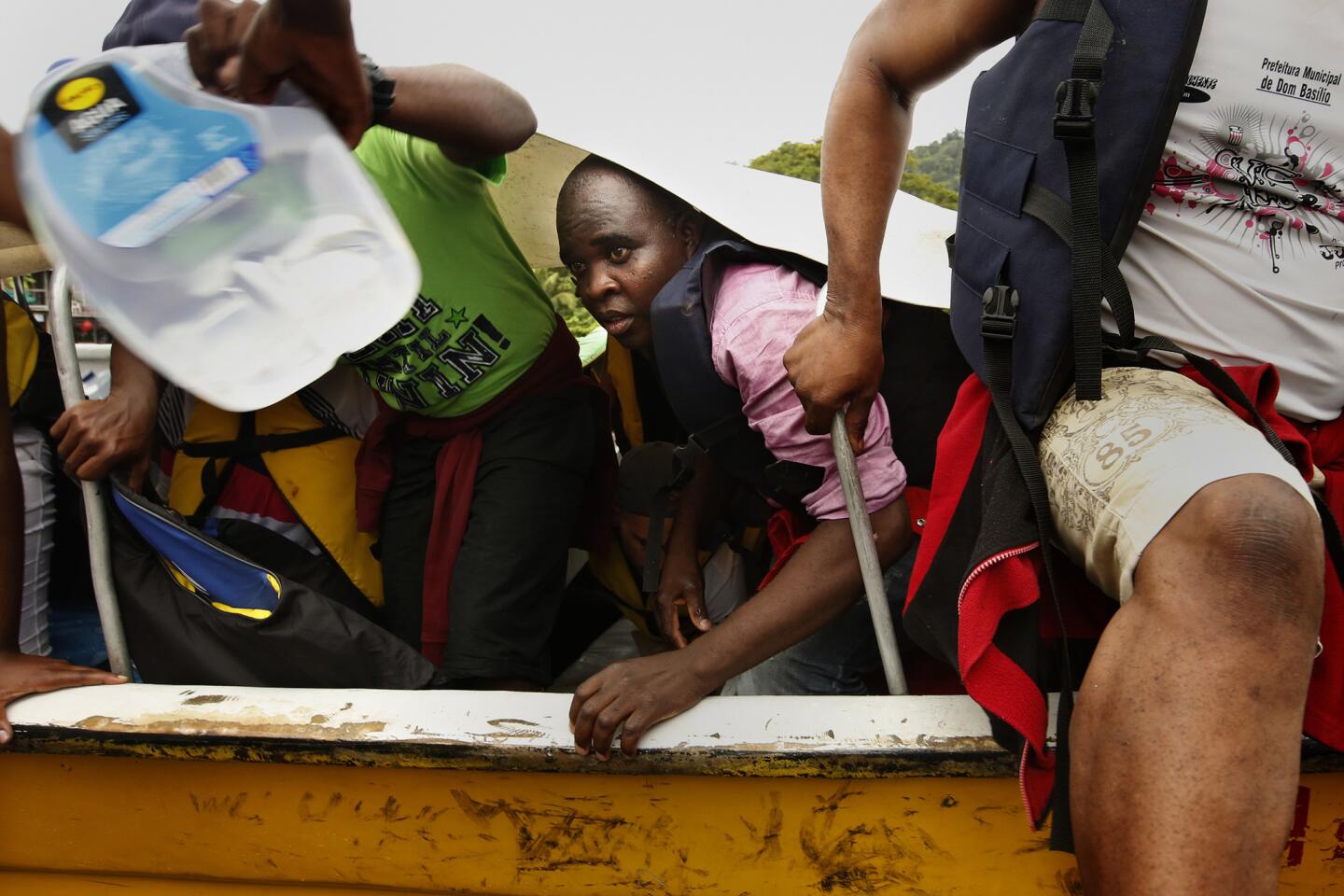
Migrants get off the boat in the coastal village of Capurgana, a tiny Colombian backpacker town where they will begin their hike into the jungle.
(Carolyn Cole / Los Angeles Times)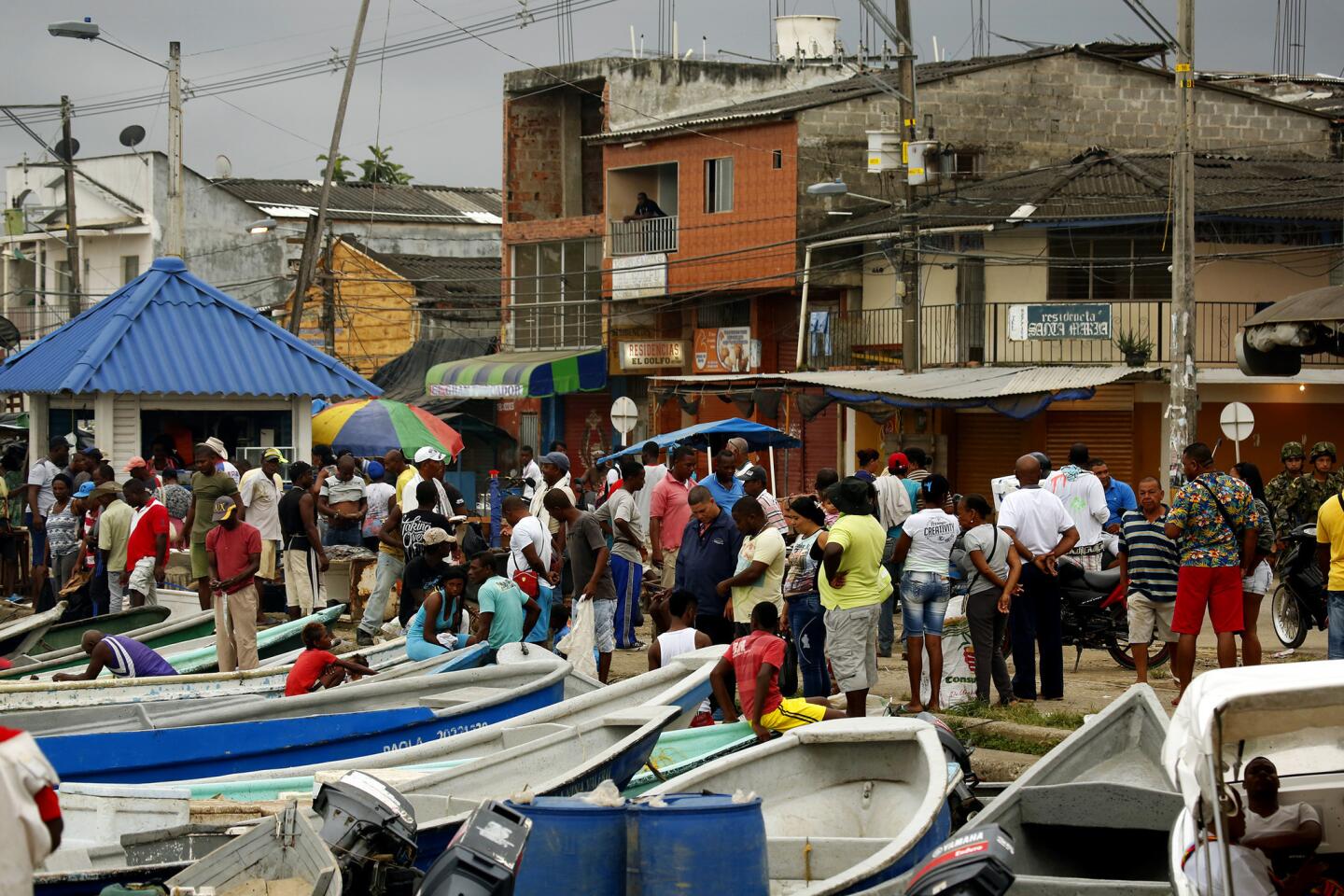
The port of Turbo comes to life each morning when fish are brought in for sale.
(Carolyn Cole / Los Angeles Times)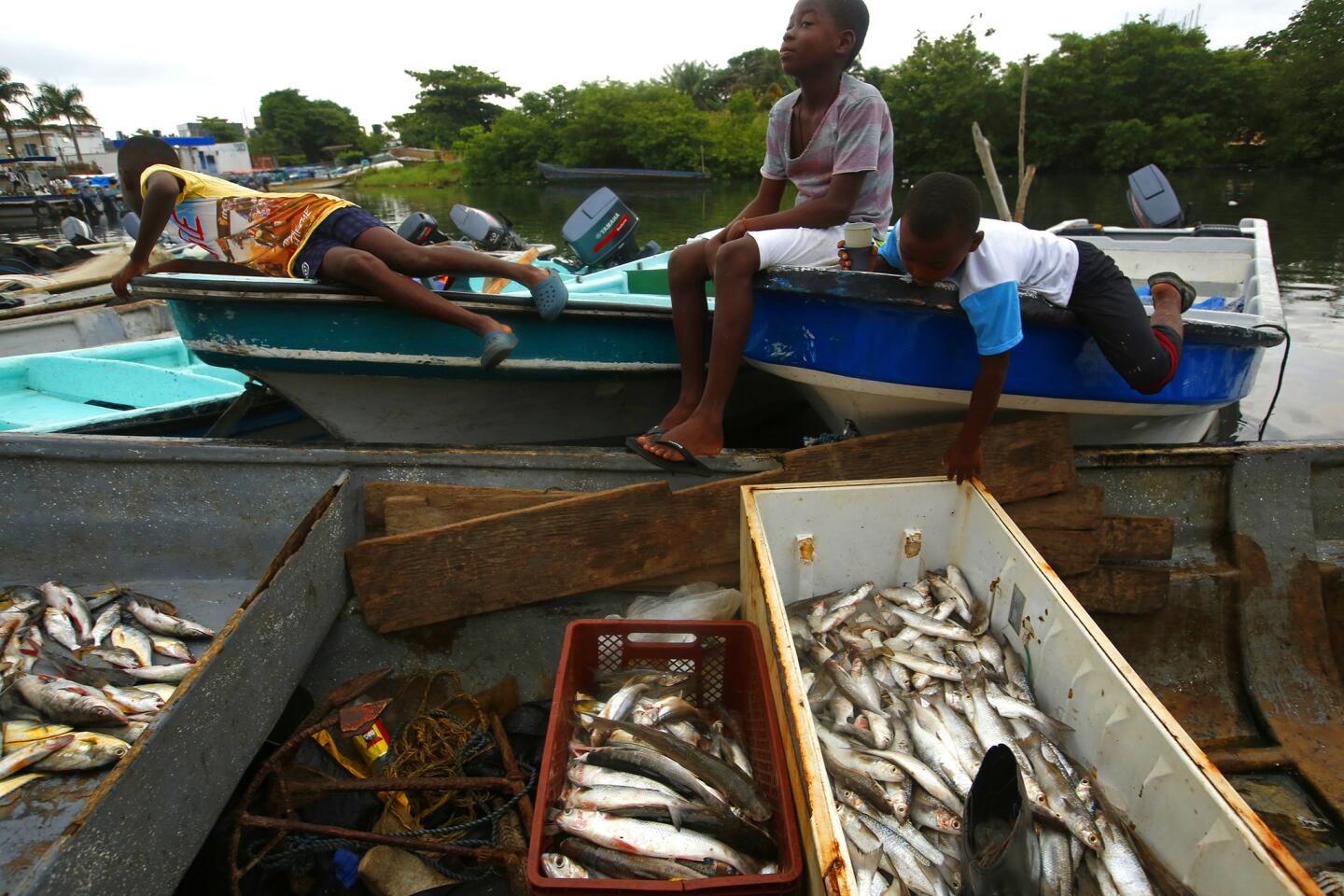
Children hang out in the port of Turbo where fish are sold each morning.
(Carolyn Cole / Los Angeles Times)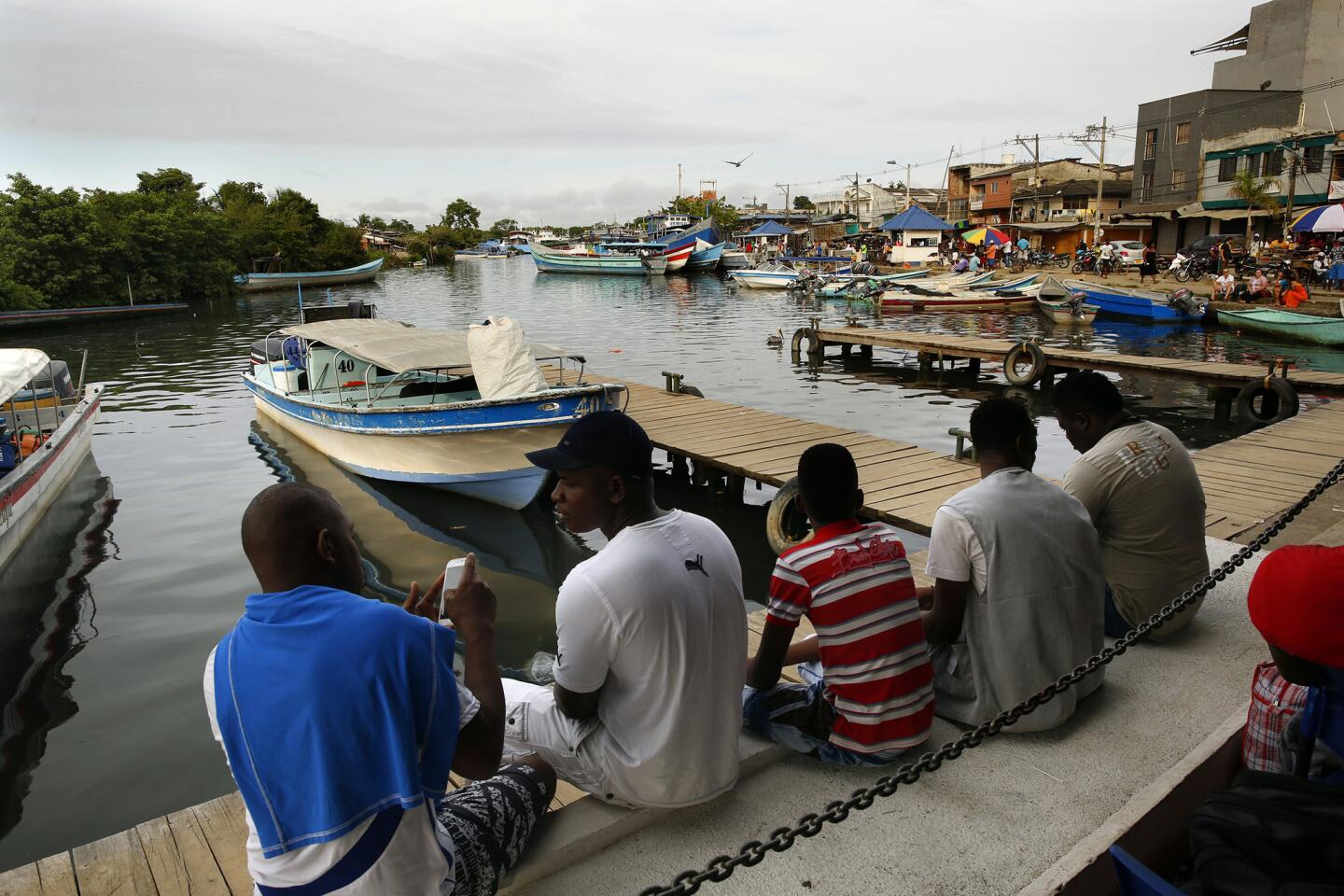
Men wait for a ferry at a dock in Turbo.
(Carolyn Cole / Los Angeles Times)Advertisement
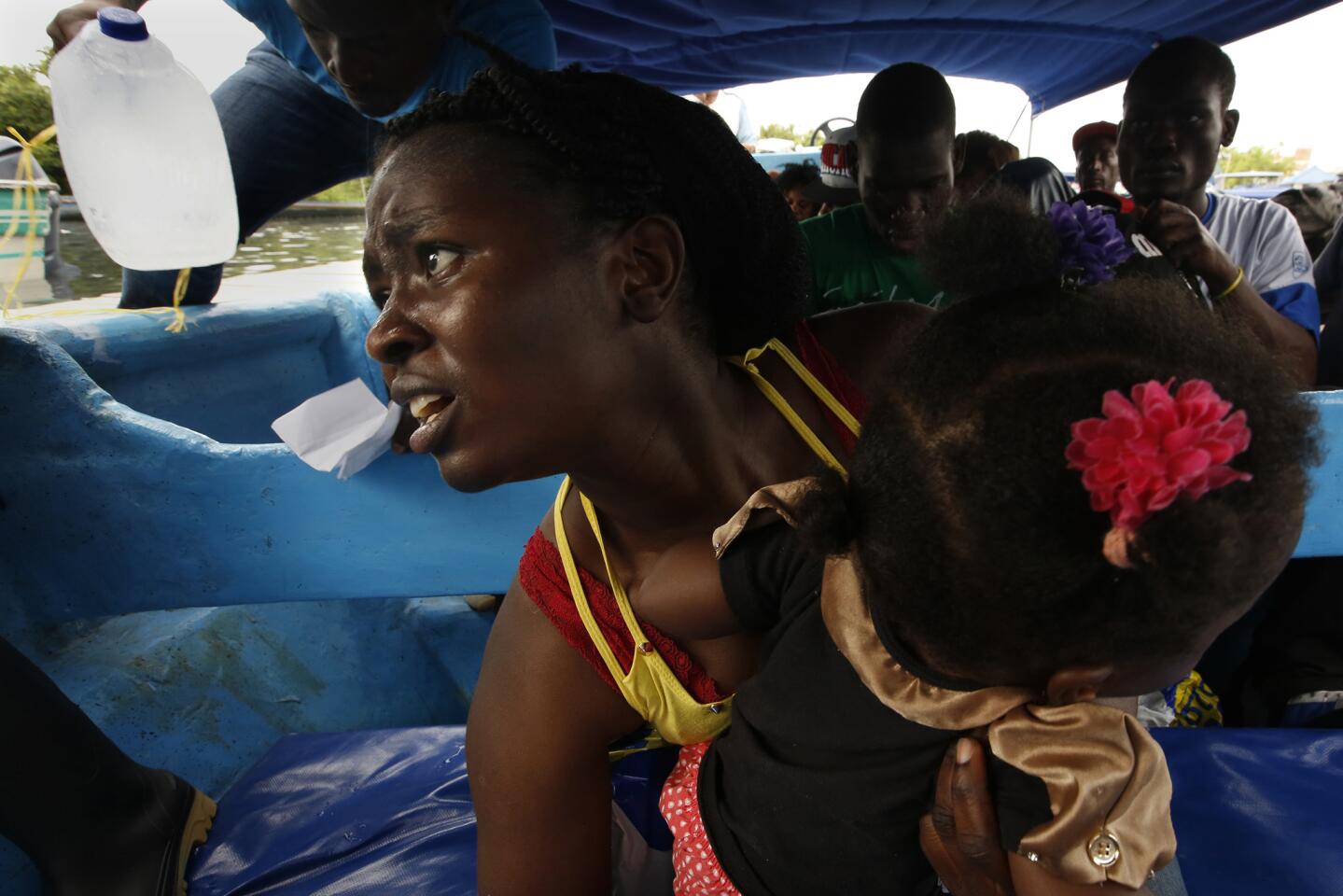
Migrants come to Turbo to gather supplies and rest up before taking boats across the gulf to a tiny town where they begin their hikes through the dense jungle that straddles the border between Colombia and Panama.
(Carolyn Cole / Los Angeles Times)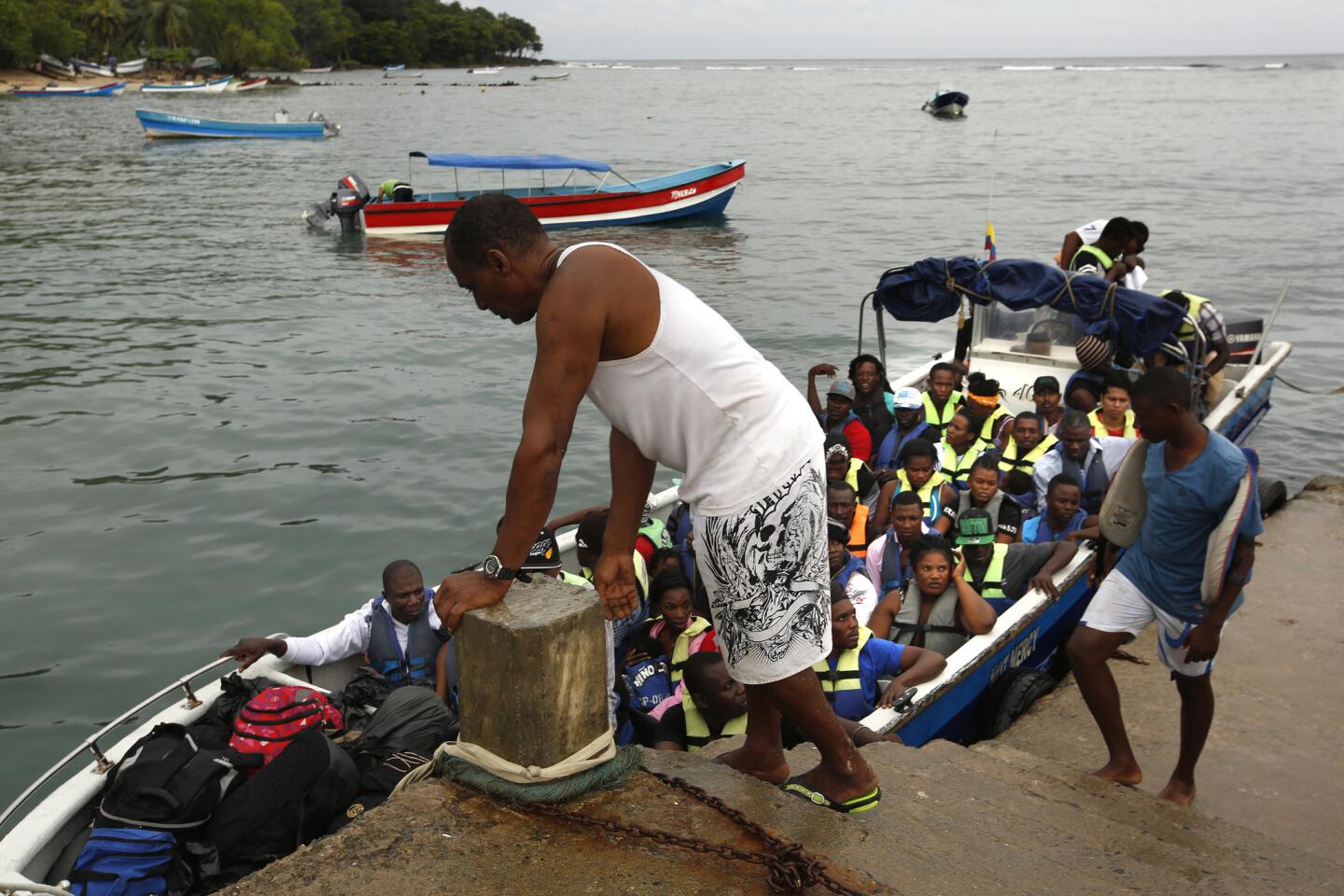
A group of migrants arrive in Carpurgana from Turbo after a three-hour boat ride. The next leg of their journey will be on foot through the dense jungle that straddles the border between Colombia and Panama.
(Carolyn Cole / Los Angeles Times)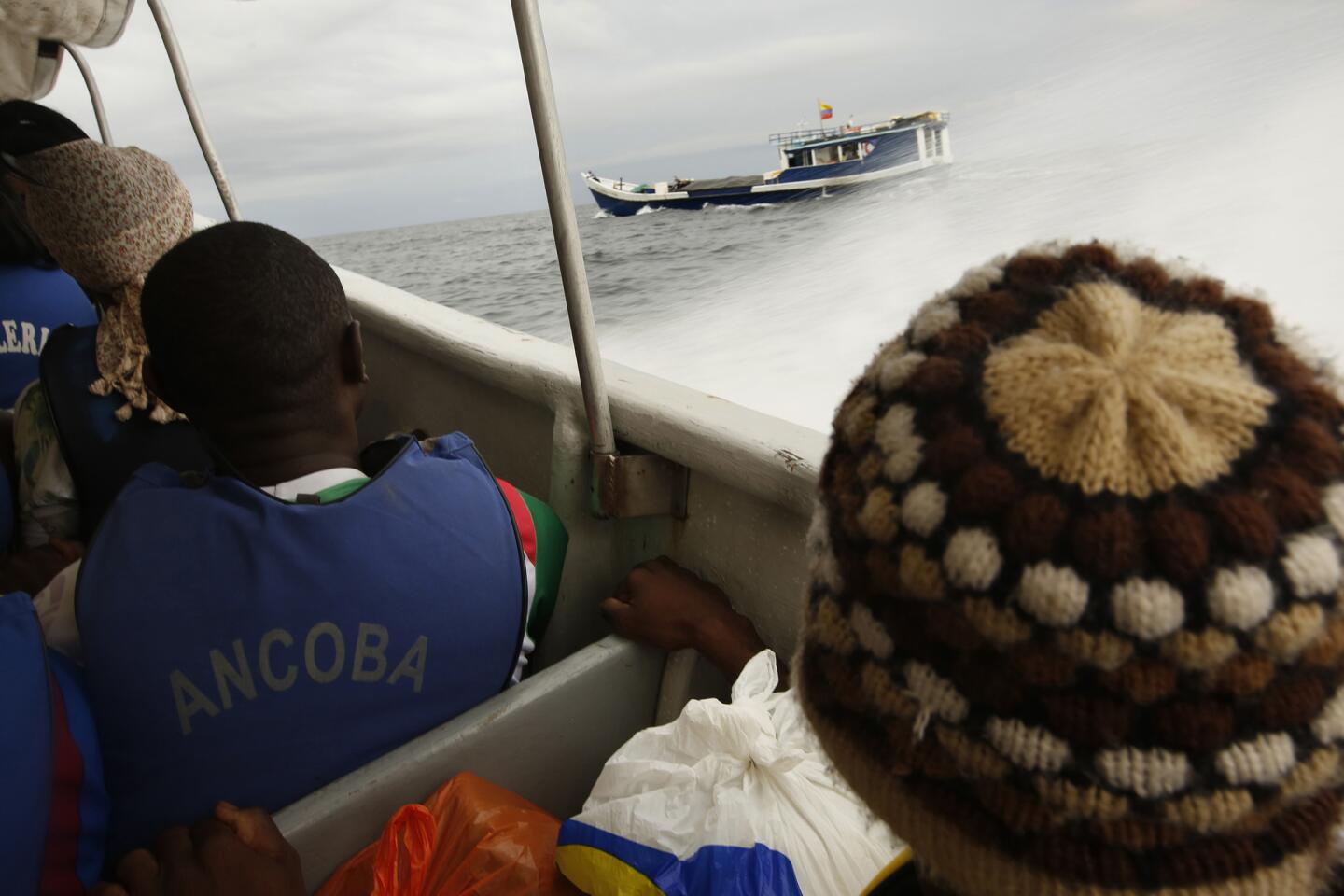
A group of migrants crosses the Gulf of Uraba, off the coast of Colombia, via speed boat. The next leg of their journey will be on foot through the jungle in the notorious region known as the Darien Gap.
(Carolyn Cole / Los Angeles Times)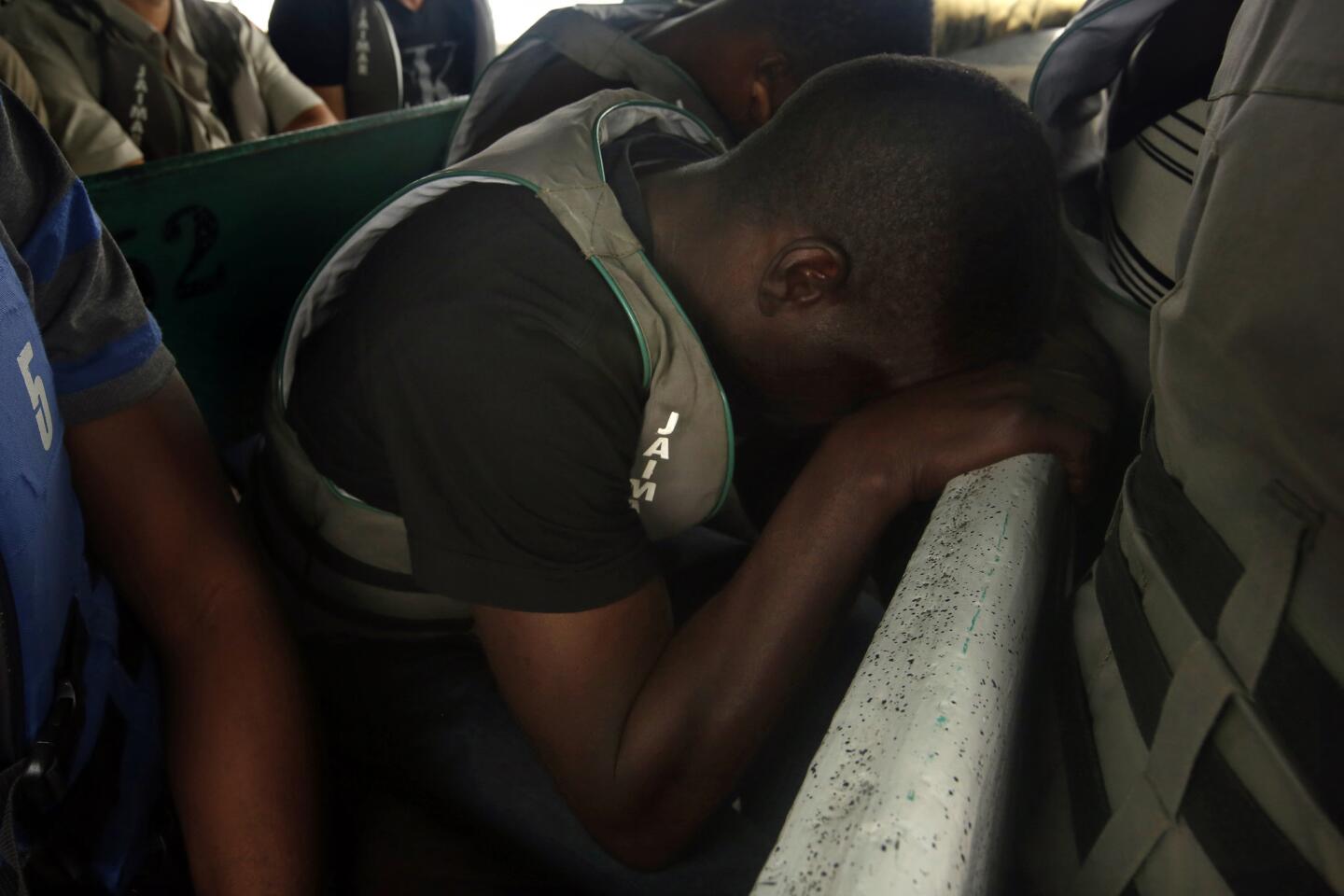
Paying a smuggler is often necessary for the difficult journey to Panama, which can take up to a week. The path through the jungle crosses wide rivers, two mountains and is lined with graves.
(Carolyn Cole / Los Angeles Times)Advertisement
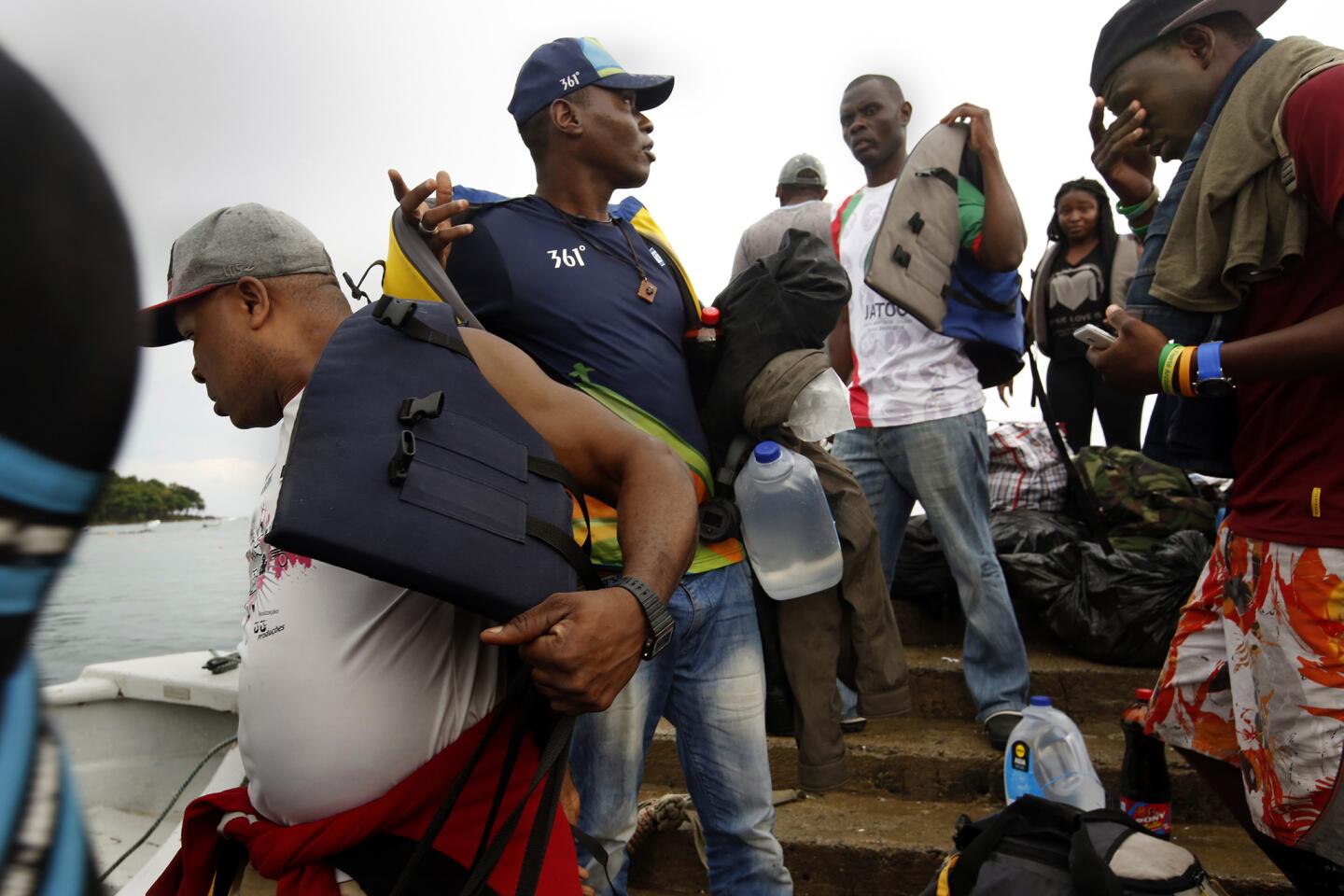
Migrants get off the boat in the coastal village of Carpurgana, a tiny Colombian backpacker town where they will begin their hike into the jungle.
(Carolyn Cole / Los Angeles Times)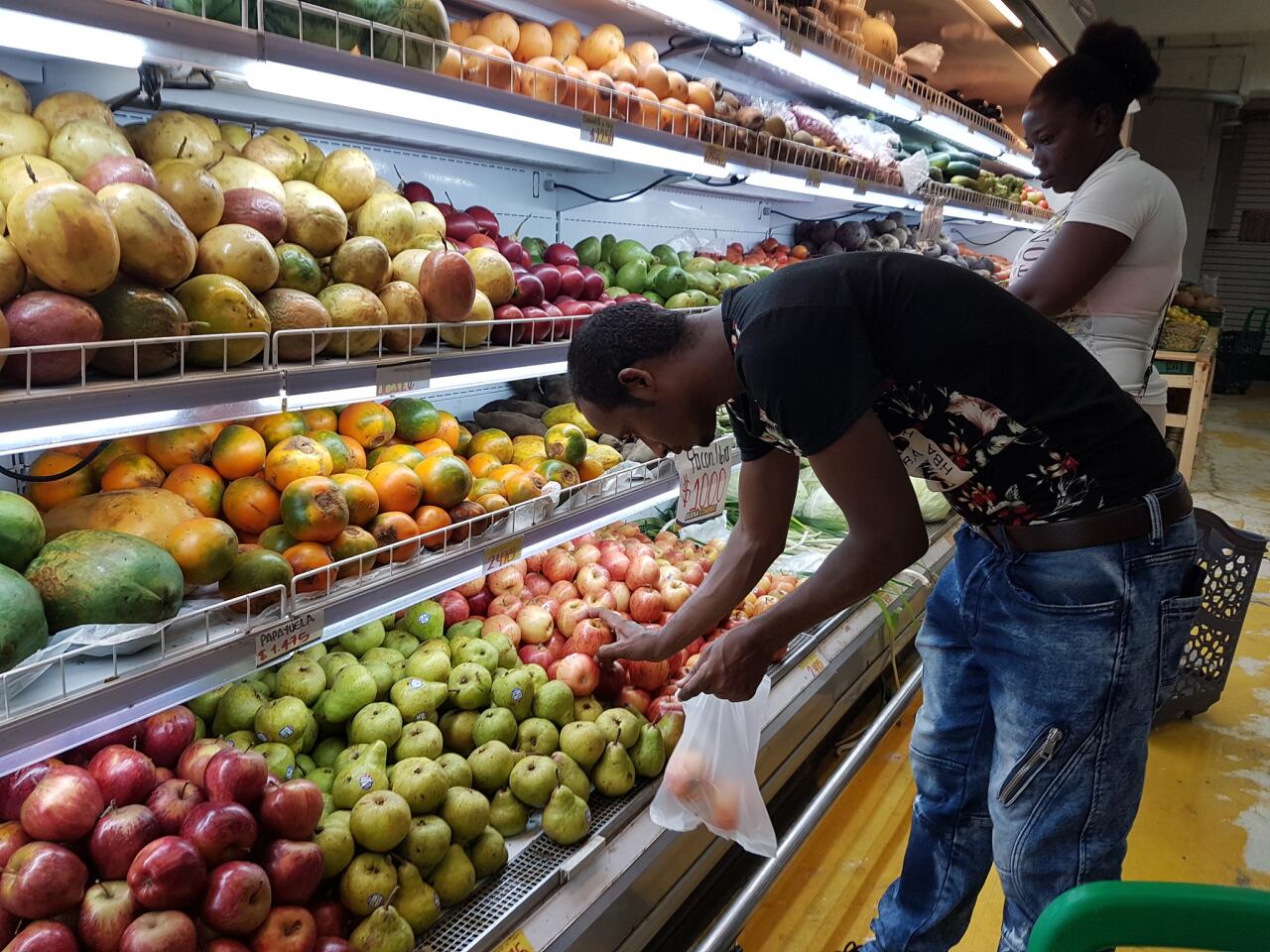
Fishale Haile, 26, from Eritrea, loads up on supplies in Turbo before beginning the dangerous trek across the Darien Gap toward Panama.
(Kate Linthicum / Los Angeles Times)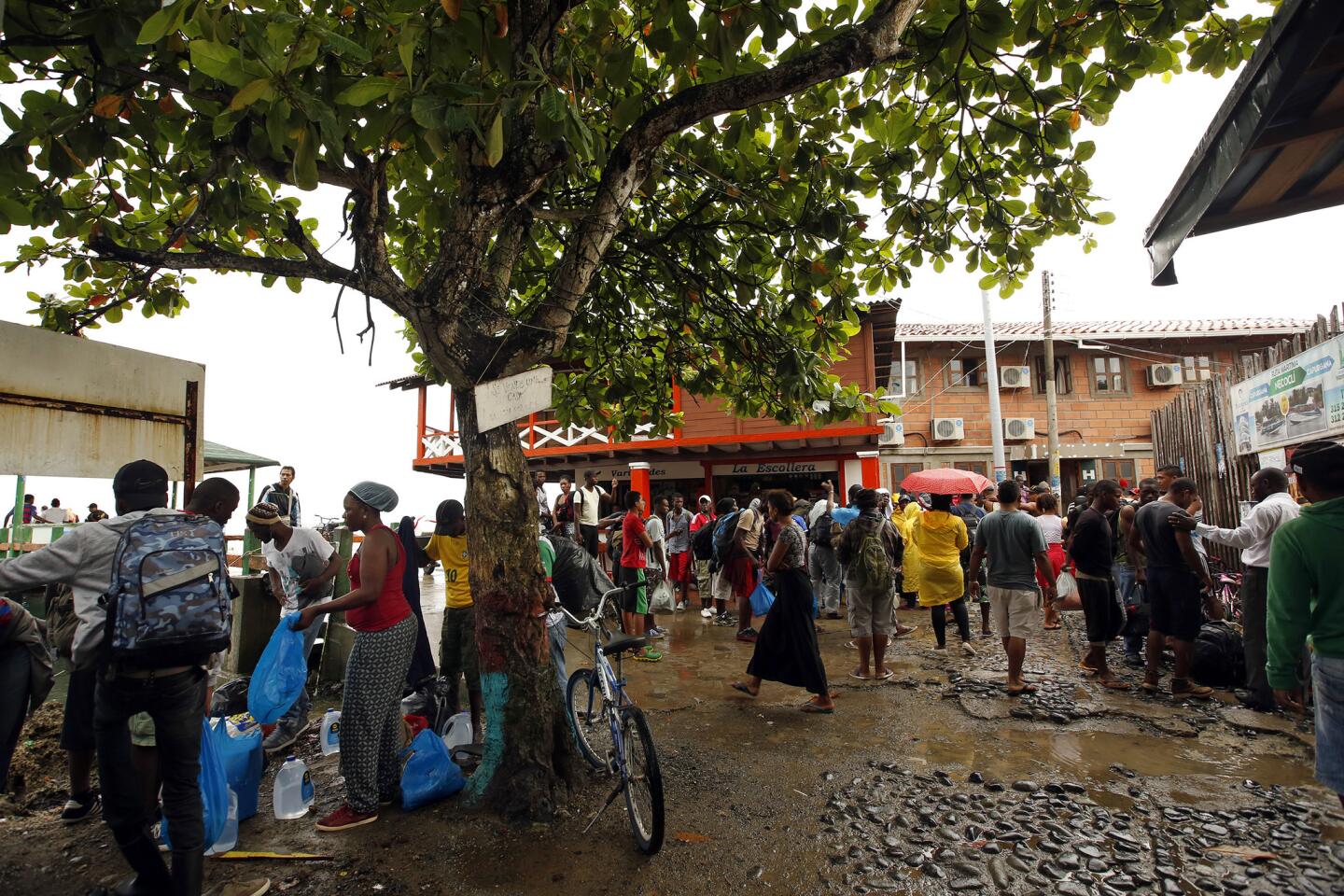
Migrants pause only briefly in the coastal village of Capurgana before starting the long and treacherous hike across the Panamanian border.
(Carolyn Cole / Los Angeles Times)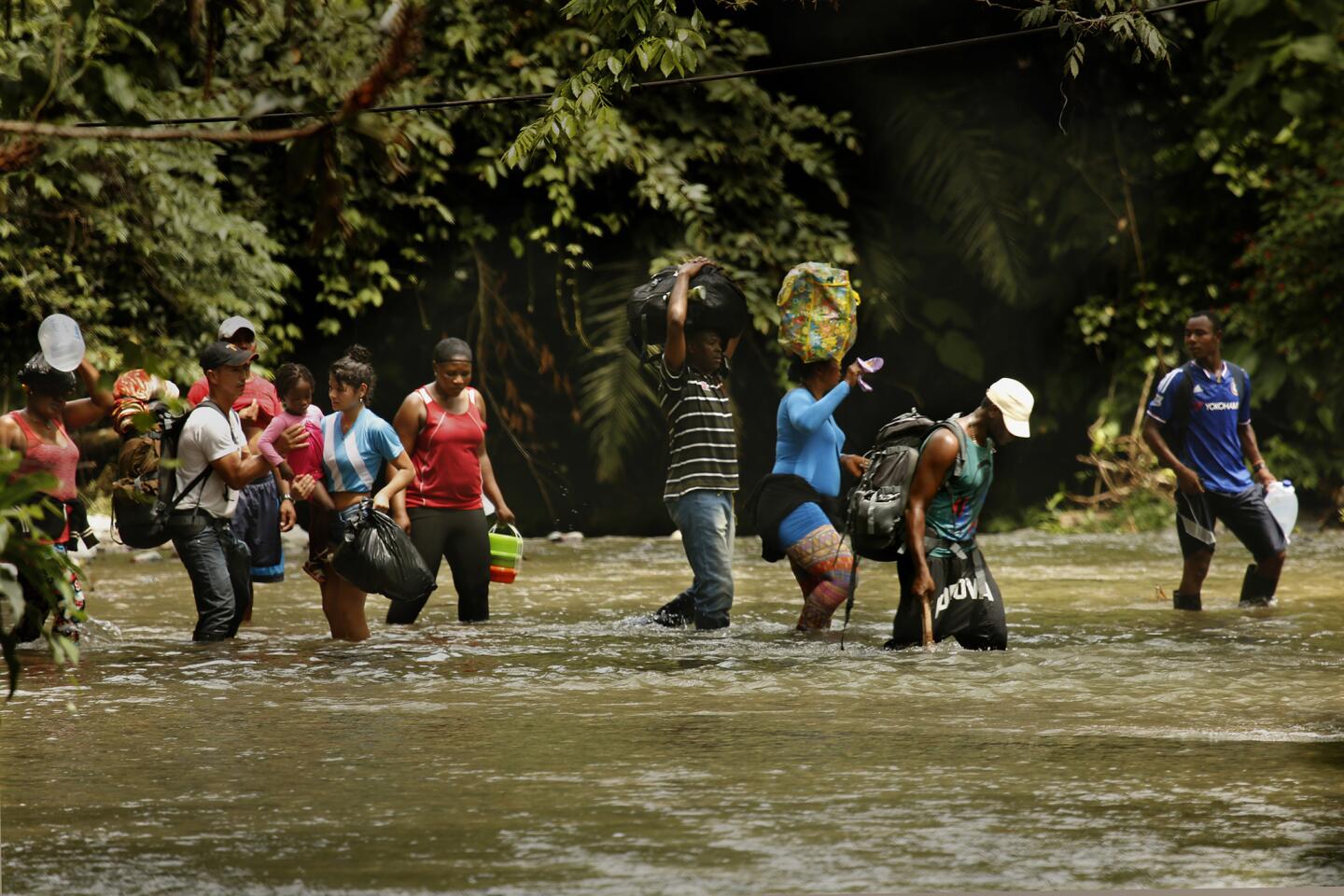
Some 9,500 “irregular” migrants traveled through Colombia in the first half of 2016. This group crosses a river as they venture deeper into the jungle.
(Carolyn Cole / Los Angeles Times)Advertisement
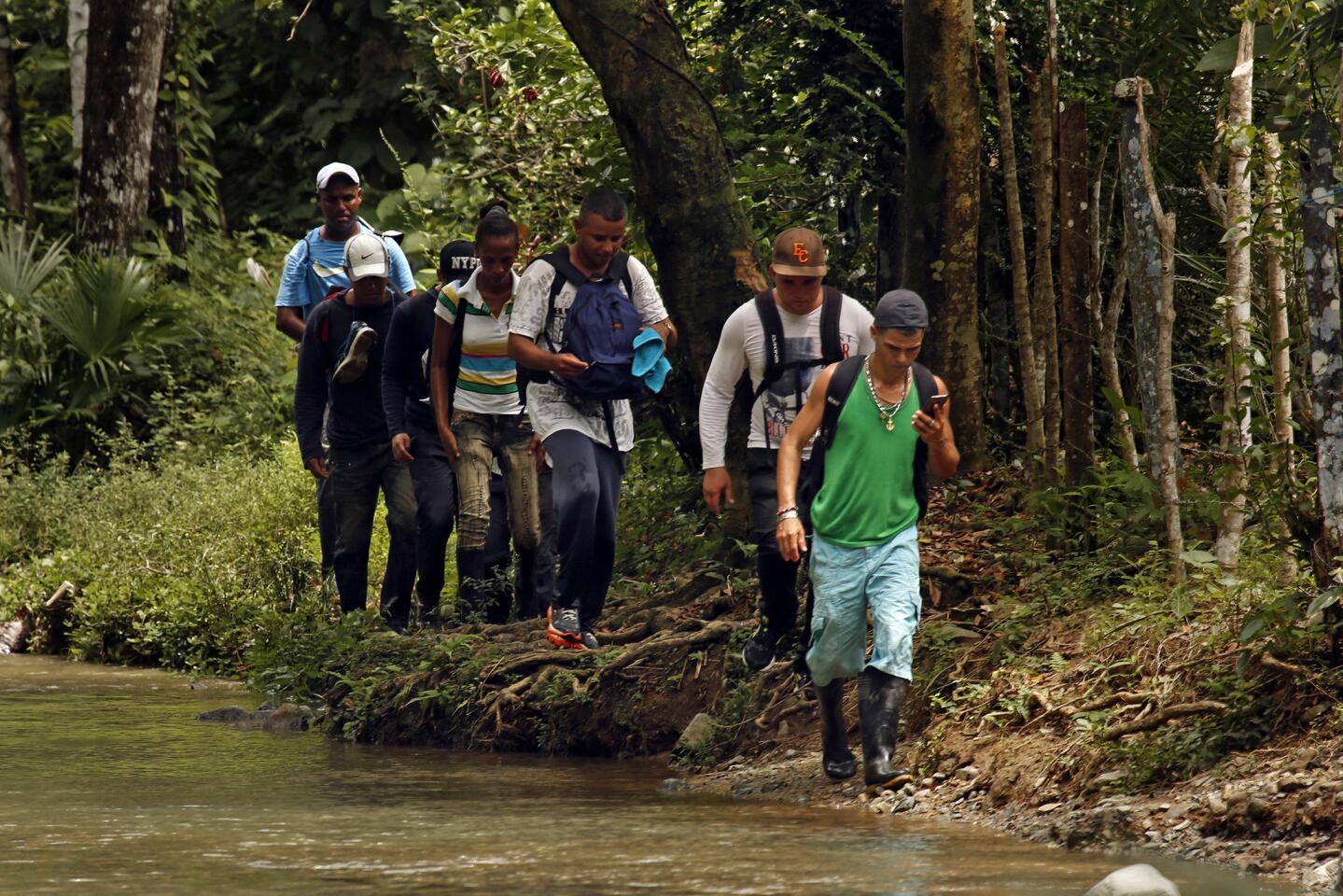
Cuba and Haiti are just a short plane ride away from Miami, but migrants from those countries are also using the long overland route to the U.S.
(Carolyn Cole / Los Angeles Times)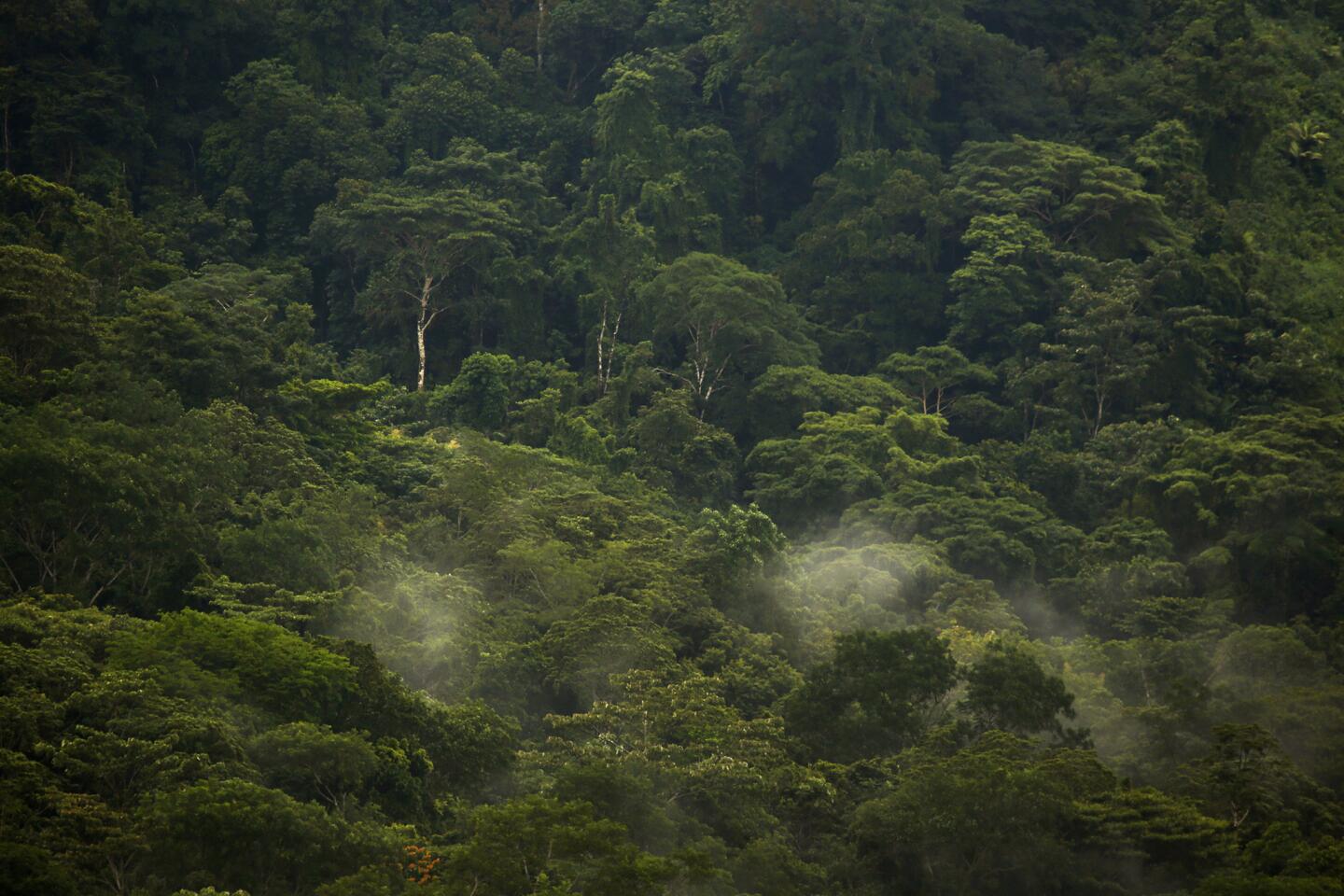
Migrants must walk through the jungle in what is known as the Darien Gap. (Carolyn Cole / Los Angeles Times)
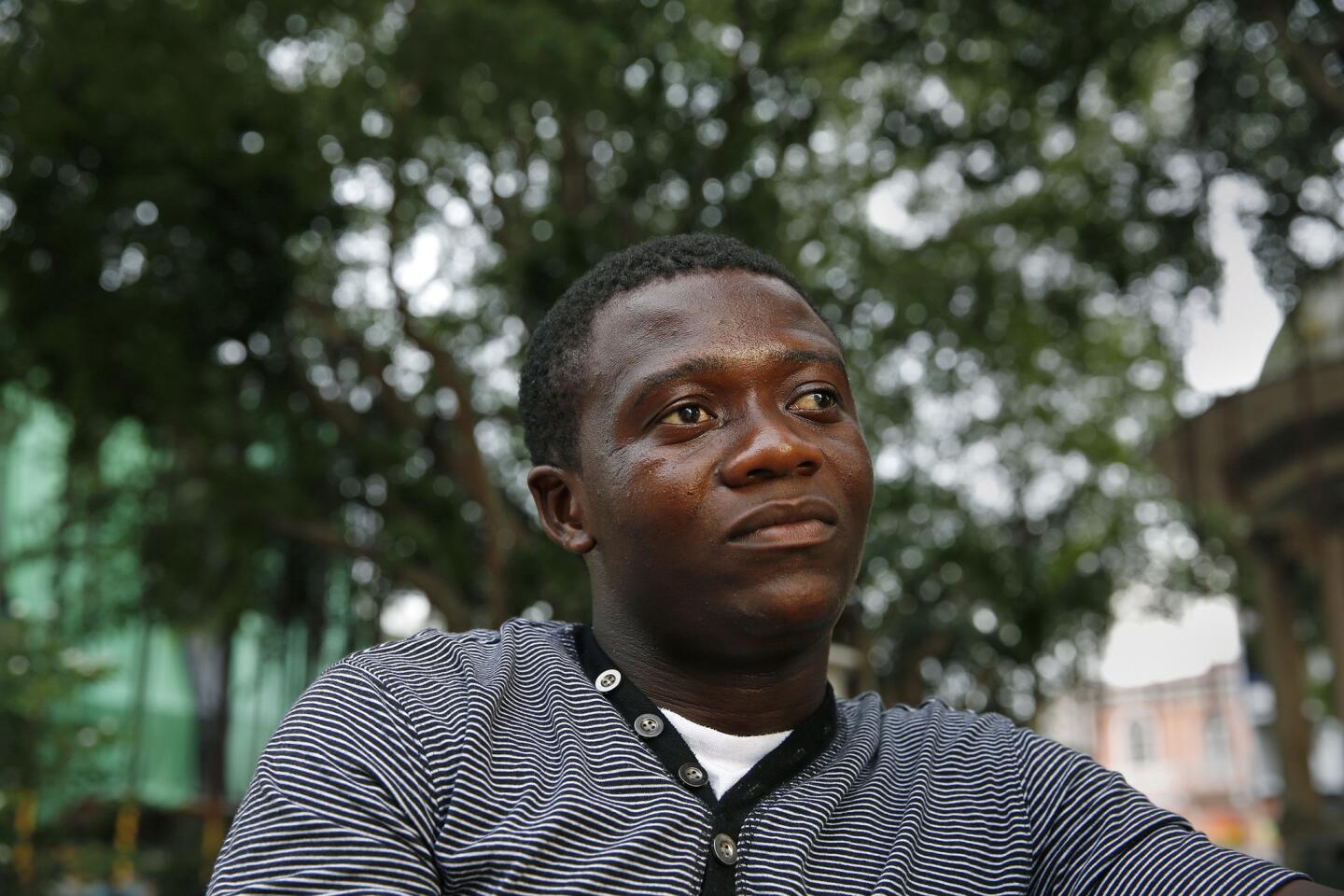
Cedrick Lezi, a migrant from the Democratic Republic of Congo, walked from 6 in the morning until 5 at night for days. “You don’t even know where you’re going,” he said. “You’re just going.”
(Carolyn Cole / Los Angeles Times)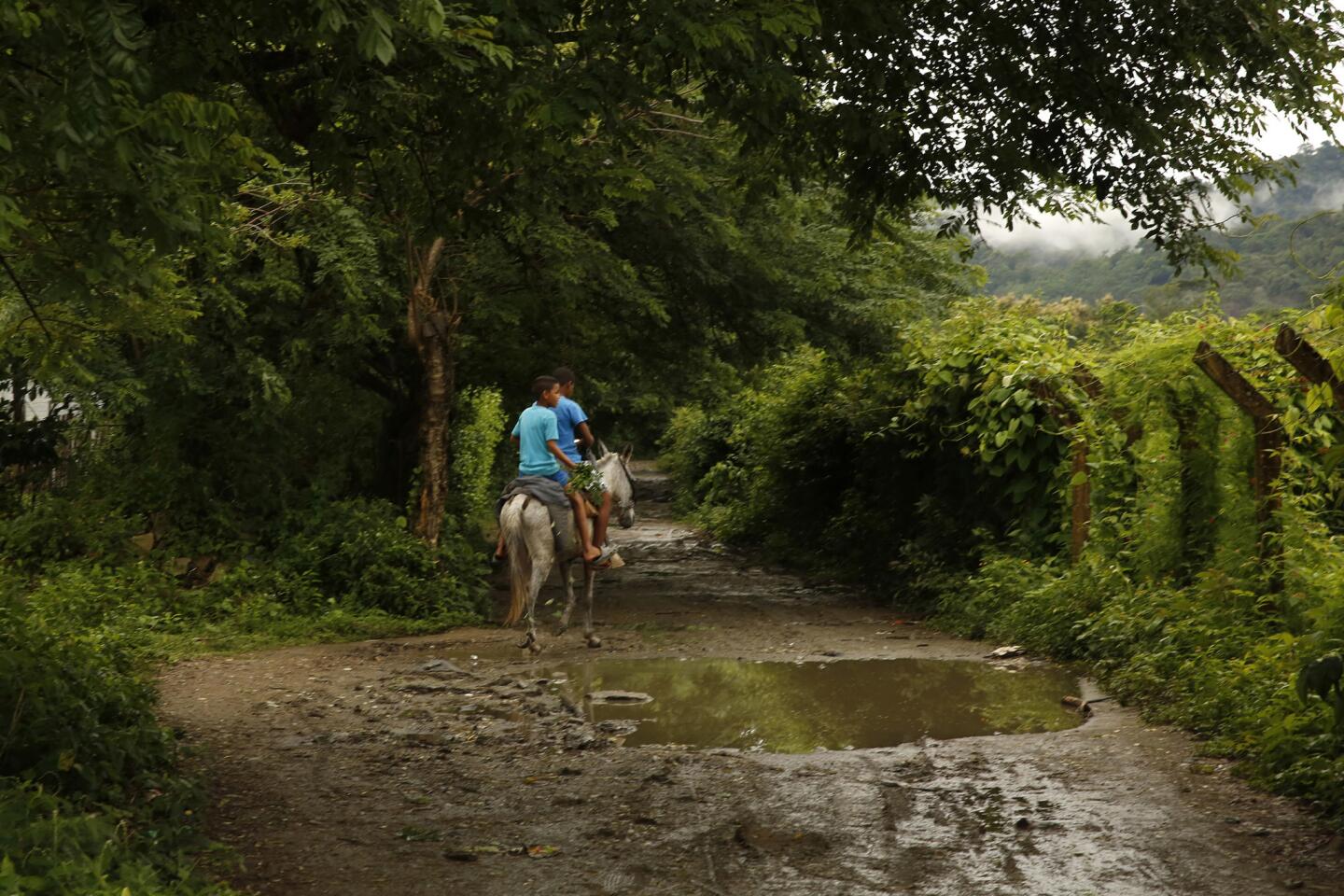
Local youth on horseback cross a path in Capurgana, Colombia, that leads toward the Darian Gap, a notorious swathe of jungle that migrants must cross to reach Panama.
(Carolyn Cole / Los Angeles Times)Advertisement
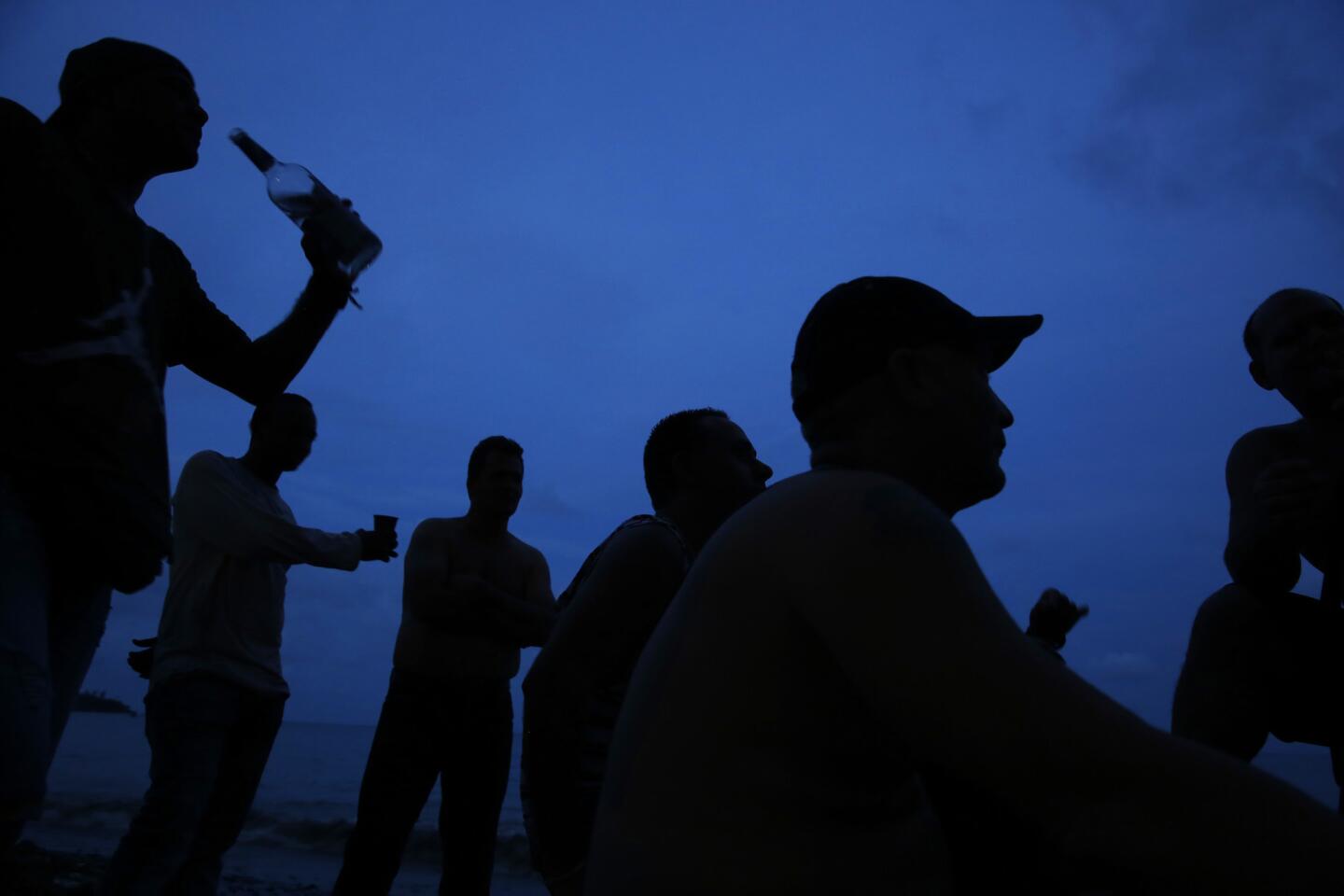
A group of Cubans enjoy their last night on the coast of Colombia before starting the long journey through the Darien Gap. They will be traveling in a group of more than 20 people.
(Carolyn Cole / Los Angeles Times)






